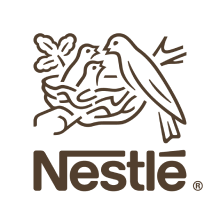
Bridging the Gap Between Recruitment and Technology

The 1990's, arguably marked the beginning of one of the most dramatic shifts in technology —the start of a new era. Social media played a unique role in this shift and is paramount in how we communicate —more specifically, how employment brands communicate with job seekers, candidates, and beyond.
Multimedia Communication
In the '90's and early 2000's, Social Media Managers and Community Managers simply didn't exist. Communication came in more traditional forms, like print collateral, newspapers, magazine ads, and billboards. When social media made its loud presence, businesses of all sizes realized the value of participating in the conversation but especially on platforms where their target audience is most pervasive. More common than not, companies and organizations across the world have people, teams, and departments dedicated to design, development, and content management of digital communication. Some organizations, like Nestlé Purina, have transformed their recruitment strategies to become primarily digital in order to maximize efficiencies, but most importantly, candidate experience and brand awareness. To date, you can find Nestlé Purina Careers active on Facebook, Instagram, Youtube, and LinkedIn. Each of these platforms provide a unique look inside Purina’s culture, people, and what you can expect when you walk in the door on day one. Outside of social media, there are many other types of technology in recruitment, let’s take a look.
Candidate Relationship Managers (CRM)
Social and digital networking is no longer limited to 3rd party channels such as job boards and social media platforms. Employers utilize Candidate Relationship Manager (CRM) software to proactively organize Talent Networks of qualified individuals. Those who sign up for our Talent Network are often the first to hear about new roles and opportunities within our organization. By simply providing your most up to date contact information and resume, our Talent Acquisition team gets to work finding the right fit for you and your skill set. Our Talent Acquisition team uses our Talent Network to proactively connect with prospective talent so when the right role is posted, they can help streamline the application process for candidates and hiring teams alike.
Applicant Tracking Systems (ATS)
The days of handing in paper résumés and cover letters are long gone, as submitting a résumé is now a digital experience. As Applicant Tracking software was introduced to help modernize the recruitment process, it resulted in major efficiencies within the recruitment lifecycle. Applicant Tracking Systems (ATS), sometimes referred to as Talent Management Systems (TMS), enable the electronic management of recruitment needs. They function similarly to Customer Relationship Management (CRM) systems but are designed to serve as a central hub for candidate record submission and tracking, specifically for businesses with heavy applicant flow. Although this implies a more automated process, Purina ensures that every application meeting minimum qualifications is reviewed by a member of the Talent Acquisition team.
Virtual Career Fairs
With the ability to webcast and communicate virtually in real-time, career fairs have transitioned from college campuses and local venues to your local internet browser. Many platforms have made it possible to host and attend virtual career fairs, which create unbelievable opportunities to minimize cost and maximize efficiencies. Virtual chat tools facilitate real-time, candid conversations within the recruitment space. At Purina, we use virtual environments like career fairs for our recruiters to speak to audiences about our functional areas and relevant job opportunities.
Virtual Interviews
We make every effort to bring candidates to onsite for their face-to-face interview, but sometimes that’s not possible. Thankfully, technology allows for us to complete high quality virtual interviews. We still treat this like any other interview —and you should, too. Here are some tips on how you can prepare for your behavior-based interview.
Interested in applying your recruitment background to our Talent Acquisition team? Visit our website and learn more about opportunities within Human Resources.




